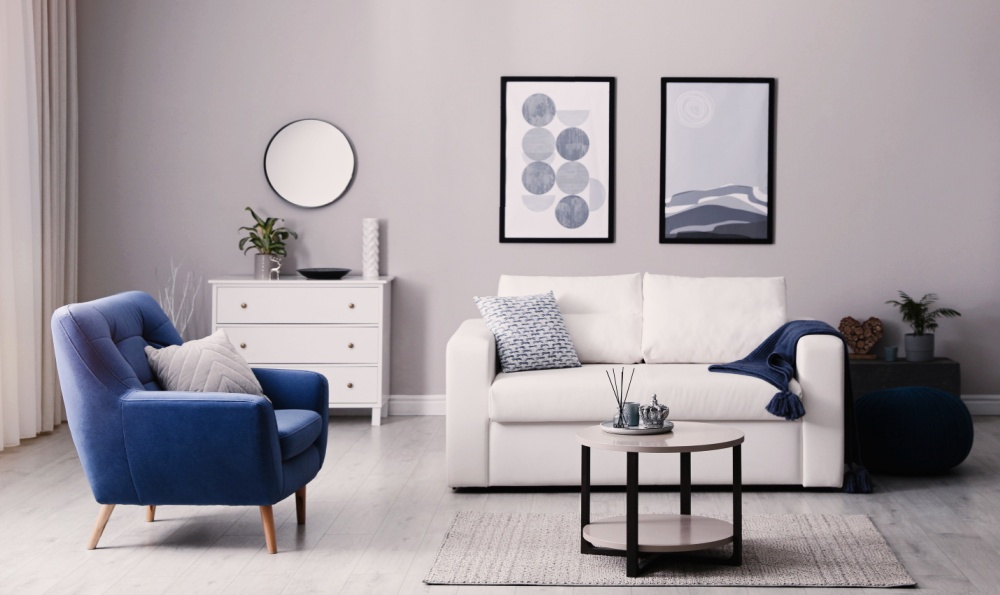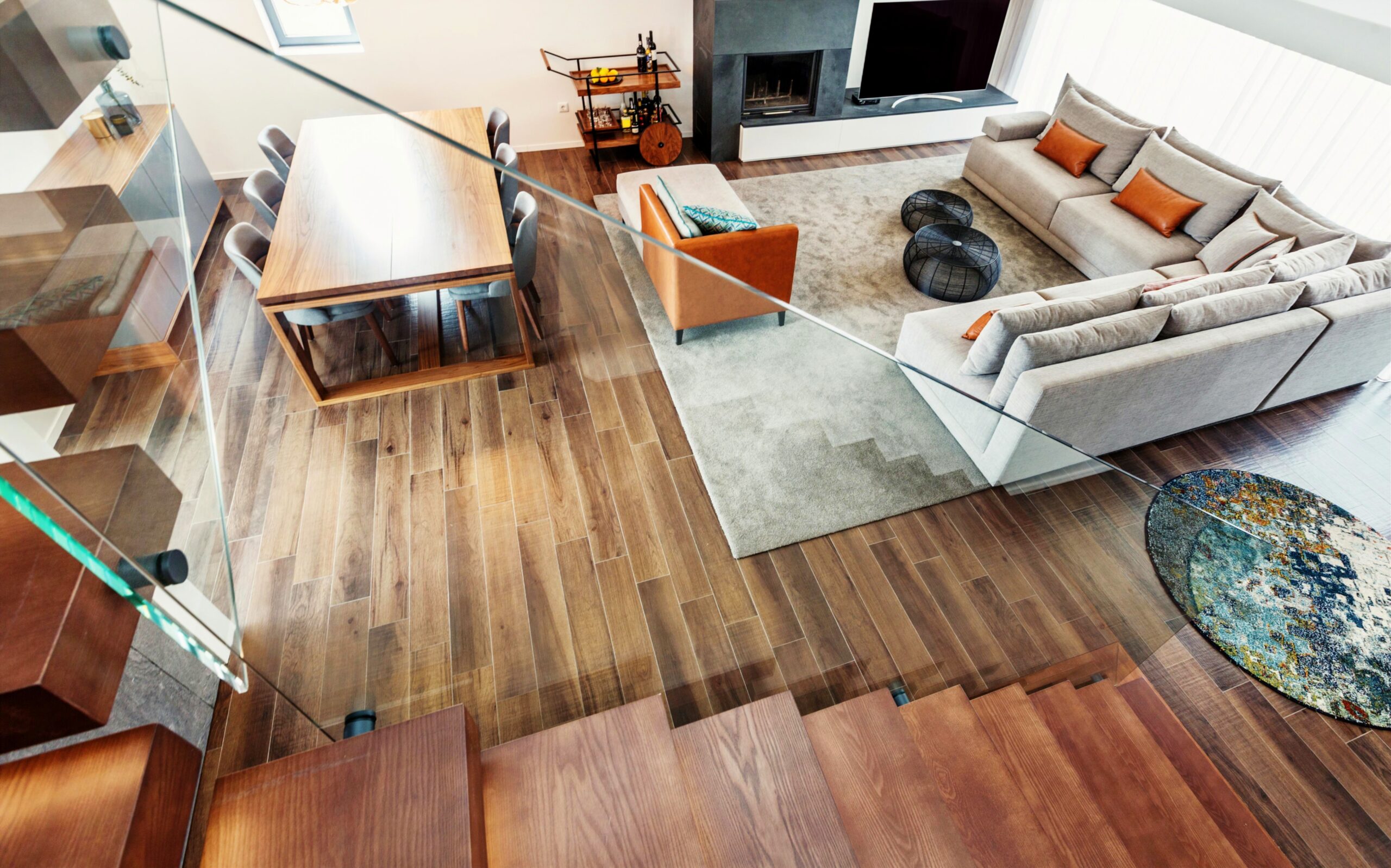10 ways to make a small space look bigger
While almost everyone would prefer to live somewhere with ample space, many homes have at least one room that’s on the smaller side, which can be difficult to decorate in a way that doesn’t make the limited space feel even smaller.
However, if you’re searching for some interior design tips to make small rooms look larger, the list of ideas below should help.
1) Use light or neutral colours
If you’re wondering which colour will make a room look bigger, the answer is light shades and neutral colour palettes. Dark hues absorb light and can make spaces feel smaller, whereas pale colours reflect light and make spaces feel more open.
Using colour schemes with shades such as white, cream, and beige, or soft tones like pastel blues and greens, will help to create the illusion of a larger room. Cooler tones create a sense of airiness, while warmer tones can establish a cosy feeling.
2) Co-ordinate furniture and walls
Using too many contrasting colours throughout the room breaks up the space, making it feel smaller. Working with a selected palette of colours in the same family creates visual continuity, so it feels like the space extends further.
All surfaces in the room should tell a cohesive story, from the walls and floor to the furniture and décor items. That’s not to say you can’t include pops of colour or texture if you prefer – but avoid anything too jarring that disrupts the visual flow.
3) Choose furniture with legs
Furniture that sits directly on the floor or has a covered base can look boxy and feel bulkier in small rooms. If the furniture is raised on exposed legs, so you can see underneath, this creates more open space and a better light flow.
Pieces such as sofas, chairs, tables, and shelving units should be as streamlined as possible to allow open gaps, giving the impression that they take up less space. It also helps if they’re lower to the floor, so there is more open air above them.
4) Keep a clear path throughout
The way you position furniture is also important to maximise the available floor space. For example, you don’t want to block sightlines to a window, nor should you have to keep zig-zagging around furniture to navigate the room.
Pushing furniture to the edges of the room against the walls is counter-intuitive, as it creates a closed-in feeling. It’s better to move items like seating and tables to the centre or one side, grouped around a focal point with a clear path around them.
5) Avoid over-cluttering the area
Squeezing too many furnishings into an already tight space is the worst thing you can do if you want it to feel roomy. Opt for slimline and multi-functional designs to reduce furniture footprints while ensuring you have the storage you need.
It’s important to edit what you have out on display, as too many items of décor can overwhelm the space, making it appear cramped and disorganised. Less is more – which is why multi-purpose furniture is invaluable for hiding the clutter.
6) Don’t use too many patterns
While keeping the palette neutral and consistent is key for a spacious appearance, a lack of contrast can also make a space look bland and feel lifeless. It’s best to introduce some different textures and patterns through rugs or cushions.
However, too many different patterns can clash and feel hectic, so avoid busy prints and stick to proportional patterns. Stripes are usually a safe bet – horizontal to make a room feel wider, or vertical to make the ceiling feel higher.
7) Draw the eye upwards
One way to make a room feel airier is to trick the eye into thinking the ceiling is higher than it actually is – implementing strategic use of colour and lines to draw the eye up towards the emptier space of the ceiling.
For example, mounting a curtain rail higher than the top of the window and hanging floor-length curtains, fitting a tall headboard behind a bed, or simply continuing the design of the walls up to the ceiling can engineer an expansive look.
8) Maximise the lighting
No matter how small, a room will always look and feel larger if the space is well-lit – which is why maximising both natural and artificial lighting is key. One of the easiest ways to do this is to forego heavy drapery so the windows let in more sunlight.
When it comes to artificial lighting, a basic overhead light in the centre will leave shadows and dark corners, and a hanging light fixture can make the ceiling feel lower. Recessed track lighting or lamps around the room can spread light more evenly.
9) Add reflective surfaces
A tried and tested trick for making rooms feel brighter and therefore bigger is to position a mirror where it can bounce light around the space. It’s best if it reflects the sky outside the window, but it shouldn’t directly reflect dazzling sunlight.
Similarly, furnishings with reflective surfaces can help to lighten up the room even further. Avoid the tacky glare of mirrored furniture, but consider items featuring polished wood, metal, or glass that will reflect light without reflecting furniture.
10) Consider glass partitions and doors
As mentioned throughout, glass is a core material to use in your interior design if you want a small space to feel larger. For example, frameless glass showers can open up tiny bathrooms, and glass tables or shelves can make living and dining areas feel less crowded due to reduced visual disruption and increased light.
When it comes to dividing spaces without making them feel dark and claustrophobic, glass walls, screens, and doors are ideal. There are many ways to modernise your home with glass partitions, as they can be useful no matter the purpose of the room – providing an elegant contemporary look and spacious atmosphere.
If glass walls aren’t feasible, even replacing a traditional door with a glass door can make a big difference. In particular, glass sliding doors can help small rooms to feel bigger because they don’t take up extra floor space by swinging open, and the unobstructed doorway improves sightlines, light levels, and the overall flow of your floorplan.
To learn more about how glass partitions can be used to make all kinds of spaces look and feel loftier, browse our website or contact the team at Glass Interiors. Call us on 0203 793 5455 or send an email to info@glass-interiors.co.uk and we can set up a consultation to discuss your glass partition needs.






